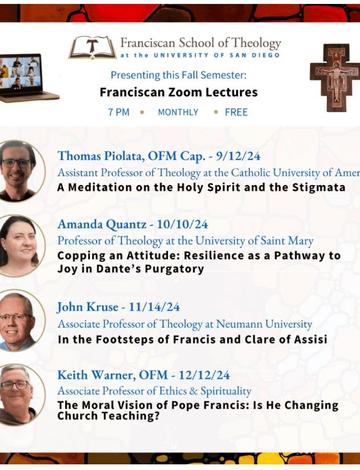
On January 31, Franciscans remember Blessed Ludovica (Louise) Albertoni (1473-1533), renowned for her works of charity and deep mystical union with God.

On January 31, Franciscans remember Blessed Ludovica (Louise) Albertoni (1473-1533), renowned for her works of charity and deep mystical union with God.



On January 31, Franciscans remember Blessed Ludovica (Louise) Albertoni (1473-1533), renowned for her works of charity and deep mystical union with God.
On January 30, Franciscans honor the memory of St. Hyacintha Mariscotti (1585-1640), a nun of the Franciscan Third Order Regular. Hyacintha’s life illustrates that conversion to deep, authentic Gospel values at times takes unusual paths.
On January 27, the Church celebrates the memory of Saint Angela Merici (1474–1540), famous for her work as an educator of young women.
On January 23, Franciscans honor the memory of St. Marianne Cope, the first American Franciscan woman to be canonized.
"The moral vision of Pope Francis: Is he changing church teaching?" by Keith Warner, OFM, Associate Professor of Ethics & Spirituality, is the fourth lecture of the Franciscan Zoom Lecture Series - Fall 2024 Semester, hosted by the Franciscan School of Theology at the University of San Diego.
Focusing on the other in a mode of prayerful listening and moving toward action with and for the other, this Franciscan spirituality of discernment can be a model not only for Franciscans but for others as well.
Fr. Tom explores the relationship between the consistent ethic of life espoused by Cardinal Joseph Bernardin and integral ecology, as described by Pope Francis. These perspectives, which consider that life issues and justice issues are interrelated, call for a wider moral vision.
This presentation by Yongho Francis Lee, OFM, PhD, Assistant Professor of Systematic and Comparative Theology, will demonstrate how the visually magnificent portrayal of the life of Saint Francis captivates our eyes, engages our hearts, and prompts profound meditation on their theological and spiritual meanings.
This presentation by Keith Warner, OFM, Associate Professor of Ethics & Spirituality, will review the approach of Pope Francis and interpret his vision for the moral life of Christians today.
This presentation by John Kruse, Associate Professor of Theology at Neumann University, will explore the benefits, both personal and spiritual, of walking in the footsteps of Francis and Clare.





